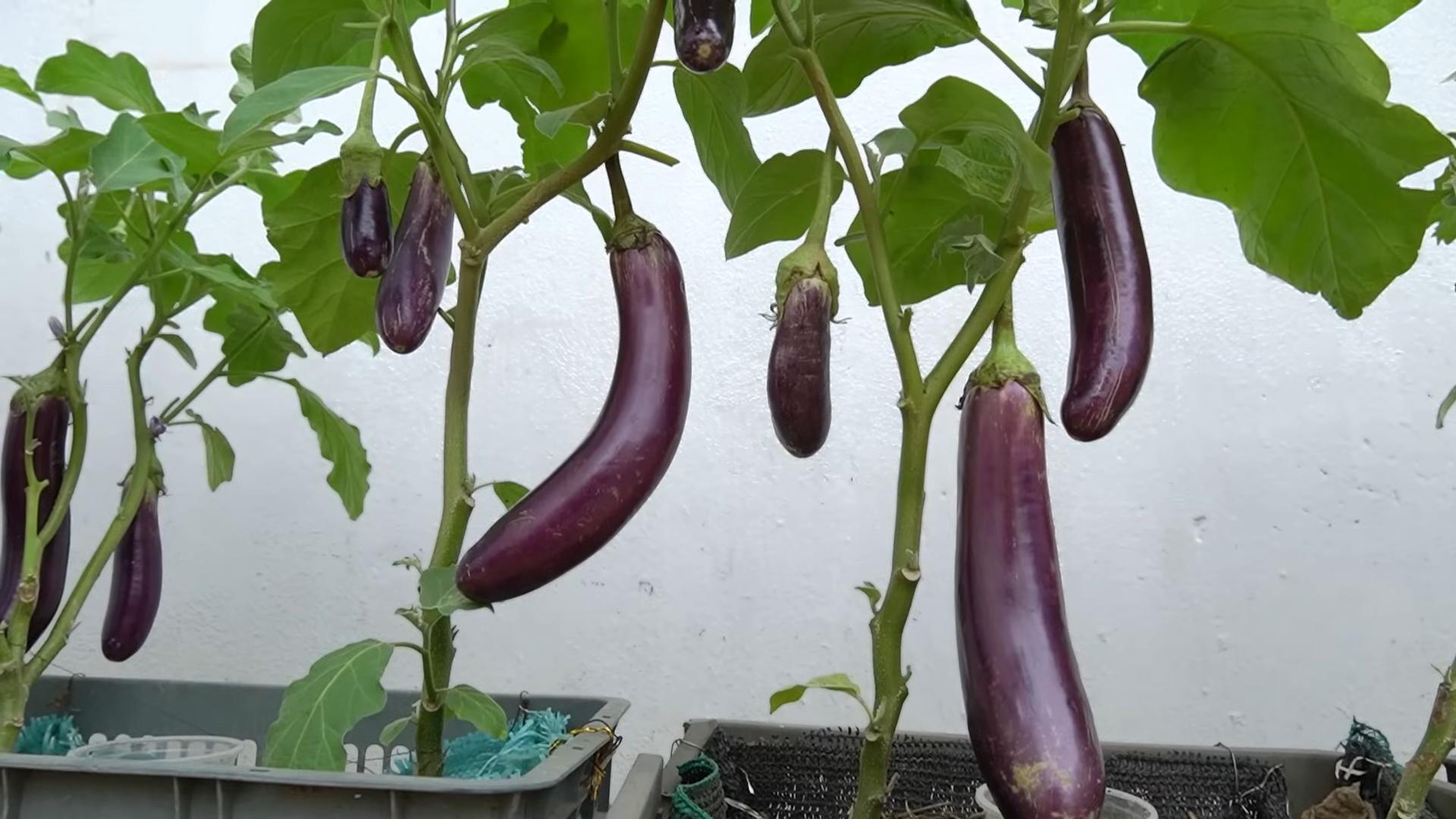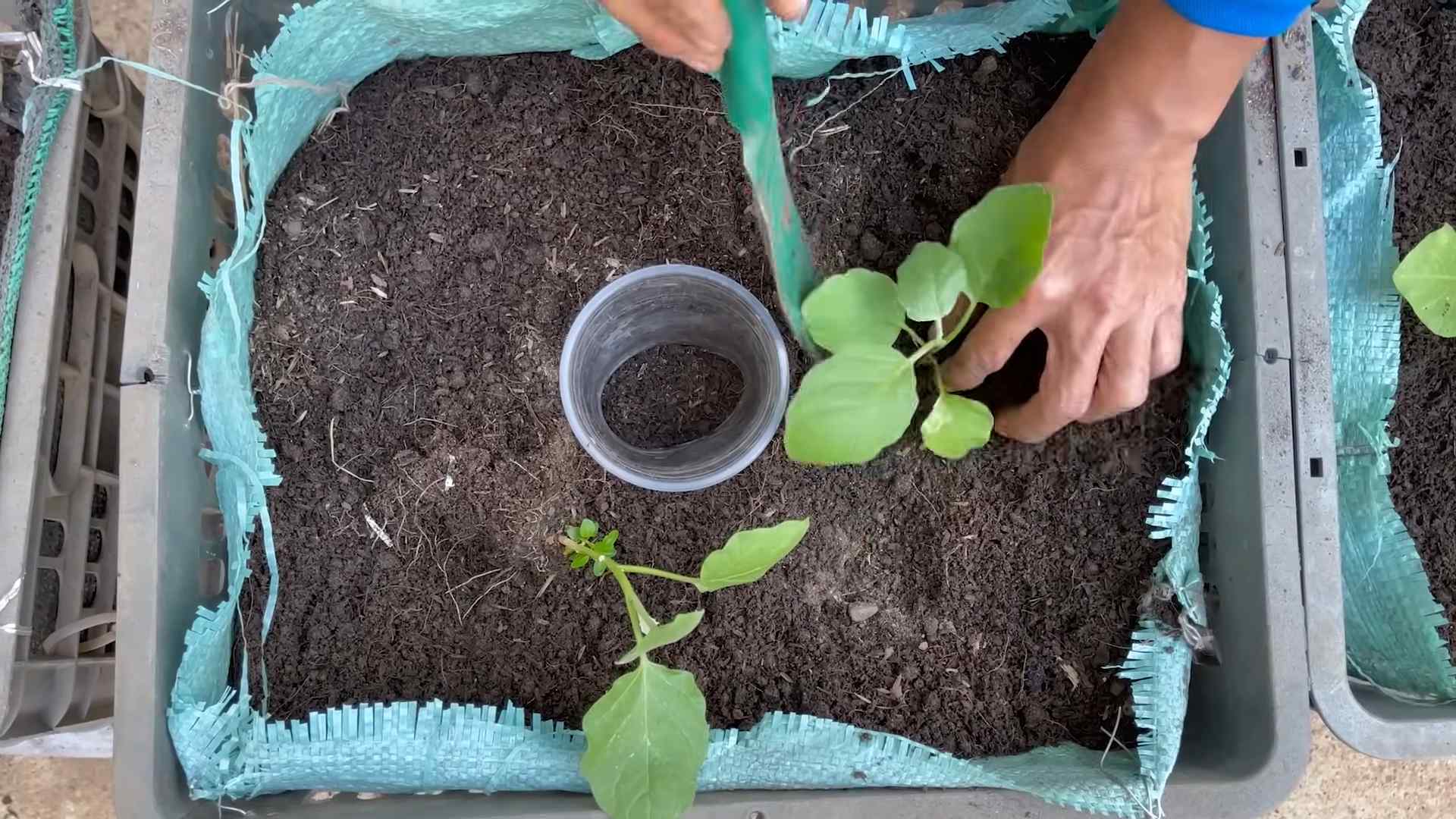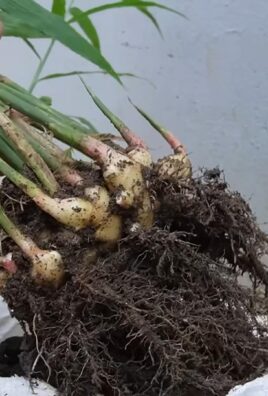Growing thriving eggplants can feel like a real victory in the home garden, right? I know I’ve certainly celebrated a successful eggplant harvest! But let’s be honest, sometimes those glossy, purple beauties can be a bit… temperamental. You’re not alone if you’ve struggled with blossom end rot, pests, or just plain lackluster fruit. That’s why I’m so excited to share some of my favorite DIY tricks and hacks to help you cultivate a bumper crop of eggplants this season.
Eggplants, originating from Southeast Asia, have a rich history, gracing tables and gardens for centuries. They’ve been revered in various cultures for their unique flavor and nutritional benefits. But even with all that history, modern gardeners still face challenges in getting the most out of their eggplant plants.
Why do you need these DIY tricks? Because growing thriving eggplants doesn’t have to be a constant battle! These simple, cost-effective solutions will empower you to tackle common problems, optimize your growing conditions, and ultimately, enjoy a more abundant and delicious harvest. From homemade pest repellents to clever watering techniques, I’m going to show you how to unlock the full potential of your eggplant patch. Let’s get our hands dirty and transform your garden into an eggplant paradise!

DIY: From Seed to Supper – My Guide to Growing Thriving Eggplants!
Okay, eggplant lovers, gather ’round! I’m going to share everything I’ve learned about growing these gorgeous, glossy vegetables. It might seem intimidating at first, but trust me, with a little planning and patience, you’ll be harvesting your own delicious eggplants in no time. This guide is designed to walk you through every step, from starting seeds indoors to dealing with common pests. Let’s get started!
Getting Started: Seeds, Soil, and Sunshine
Before we even think about planting, we need to get our ducks in a row. This means gathering the right supplies and understanding the basic needs of our eggplant babies.
* **Choosing the Right Variety:** Eggplants come in all shapes, sizes, and colors! Do some research and pick varieties that are well-suited to your climate and taste preferences. I personally love ‘Black Beauty’ for its classic flavor and ‘Ichiban’ for its long, slender shape.
* **Starting Seeds Indoors (Recommended):** Eggplants need a long growing season, so starting them indoors is crucial, especially if you live in a cooler climate.
* **Soil is Key:** Eggplants are heavy feeders, so they need rich, well-draining soil.
* **Sunshine, Sunshine, Sunshine:** These guys are sun worshippers! Aim for at least 6-8 hours of direct sunlight per day.
Step-by-Step: Starting Eggplant Seeds Indoors
This is where the magic begins! Starting seeds indoors gives your eggplants a head start and protects them from unpredictable weather.
1. **Gather Your Supplies:** You’ll need:
* Eggplant seeds
* Seed starting trays or small pots
* Seed starting mix (a light, sterile mix is essential)
* A spray bottle filled with water
* A heat mat (optional, but highly recommended)
* A grow light (also optional, but helpful)
2. **Prepare the Seed Starting Trays:** Fill each cell of your seed starting tray or each pot with seed starting mix. Gently tap the tray to settle the mix.
3. **Sow the Seeds:** Make a small indentation (about ¼ inch deep) in the center of each cell or pot. Place 2-3 seeds in each indentation. This increases the chances of at least one seed germinating.
4. **Cover the Seeds:** Gently cover the seeds with seed starting mix.
5. **Water Carefully:** Use a spray bottle to mist the soil thoroughly. You want the soil to be moist, but not soggy.
6. **Provide Warmth:** Place the seed starting tray on a heat mat. Eggplant seeds germinate best in warm temperatures (around 80-85°F).
7. **Provide Light:** If you’re using a grow light, position it a few inches above the seed starting tray. If not, place the tray in a sunny window.
8. **Maintain Moisture:** Keep the soil consistently moist by misting it regularly. Don’t let it dry out!
9. **Wait Patiently:** Germination usually takes 7-14 days.
10. **Thin Seedlings:** Once the seedlings emerge and have a couple of true leaves (the second set of leaves), thin them out by snipping off the weaker seedlings at the soil line. Leave only the strongest seedling in each cell or pot.
Transplanting Your Eggplant Seedlings
Once your seedlings are strong and the weather is warm enough, it’s time to move them outdoors! This is a crucial step, so handle your seedlings with care.
1. **Harden Off the Seedlings:** This is a *very* important step! Before transplanting, you need to acclimate your seedlings to outdoor conditions. Start by placing them outside in a sheltered spot for an hour or two each day, gradually increasing the amount of time they spend outdoors over the course of a week. This helps them adjust to the sun, wind, and temperature changes.
2. **Prepare the Garden Bed:** Choose a sunny spot in your garden with well-draining soil. Amend the soil with compost or well-rotted manure to improve its fertility. Eggplants love rich soil!
3. **Dig the Holes:** Dig holes that are slightly larger than the root balls of your seedlings. Space the holes about 18-24 inches apart.
4. **Gently Remove the Seedlings:** Carefully remove the seedlings from their pots or trays. Try to disturb the roots as little as possible.
5. **Plant the Seedlings:** Place each seedling in a hole and gently backfill with soil. Make sure the top of the root ball is level with the surrounding soil.
6. **Water Thoroughly:** Water the newly transplanted seedlings thoroughly.
7. **Mulch Around the Plants:** Apply a layer of mulch around the plants to help retain moisture, suppress weeds, and regulate soil temperature. I like to use straw or shredded leaves.
8. **Stake or Cage (Optional):** Some eggplant varieties can get quite tall and may need staking or caging to prevent them from falling over. This is especially helpful in windy areas.
Caring for Your Eggplants: Watering, Feeding, and Pruning
Now that your eggplants are in the ground, it’s time to provide them with the care they need to thrive.
* **Watering:** Eggplants need consistent moisture, especially during hot weather. Water deeply whenever the top inch of soil feels dry. Avoid overhead watering, as this can promote fungal diseases. Drip irrigation is ideal.
* **Fertilizing:** Eggplants are heavy feeders and benefit from regular fertilization. Use a balanced fertilizer (e.g., 10-10-10) every 2-3 weeks. You can also side-dress with compost or well-rotted manure.
* **Pruning:** Pruning can help improve air circulation and encourage fruit production. Remove any suckers (small shoots that grow from the base of the plant) and any yellowing or damaged leaves. You can also prune the lower leaves to prevent soil-borne diseases from splashing onto the foliage.
* **Weed Control:** Keep the garden bed free of weeds, as they can compete with your eggplants for nutrients and water.
* **Pest and Disease Control:** Keep a close eye on your eggplants for signs of pests or diseases.
Dealing with Common Eggplant Pests and Diseases
Unfortunately, eggplants are susceptible to a few common pests and diseases. Here’s how to deal with them:
* **Flea Beetles:** These tiny beetles can chew small holes in the leaves. Cover your plants with row covers to prevent flea beetles from reaching them. You can also use insecticidal soap or neem oil.
* **Aphids:** These small, sap-sucking insects can weaken your plants. Spray them off with a strong stream of water or use insecticidal soap.
* **Spider Mites:** These tiny mites can cause the leaves to become speckled and yellow. Spray them with insecticidal soap or neem oil.
* **Tomato Hornworms:** These large caterpillars can devour entire plants in a matter of days. Handpick them off your plants and drop them into a bucket of soapy water.
* **Verticillium Wilt:** This fungal disease causes the leaves to wilt and turn yellow. Choose disease-resistant varieties and practice crop rotation.
* **Early Blight:** This fungal disease causes dark spots on the leaves. Remove infected leaves and spray with a fungicide.
Harvesting Your Eggplants
The moment you’ve been waiting for! Knowing when to harvest your eggplants is key to getting the best flavor and texture.
1. **Check for Size and Color:** Eggplants are usually ready to harvest when they’re about two-thirds of their mature size and have a glossy, vibrant color.
2. **Press Gently:** Gently press the skin of the eggplant. If it feels firm but slightly yielding, it’s ready to harvest. If it feels hard and tough, it’s not quite ripe.
3. **Use a Sharp Knife or Pruners:** Cut the eggplant from the plant using a sharp knife or pruners. Leave about an inch of stem attached to the fruit.
4. **Harvest Regularly:** Harvest your eggplants regularly to encourage the plant to produce more fruit.
5. **Store Properly:** Store your eggplants in the refrigerator for up to a week.
Enjoying Your Harvest
Now for the best part – cooking and eating your delicious, homegrown eggplants! There are endless ways to enjoy them. Here are a few of my favorites:
* **Grilled Eggplant:** Slice the eggplant into rounds, brush with olive oil, and grill until tender.
* **Eggplant Parmesan:** Layer sliced eggplant with tomato sauce, mozzarella cheese, and Parmesan cheese, and bake until bubbly.
* **Baba Ghanoush:** Roast the eggplant until soft, then blend it with tahini, lemon juice, garlic, and olive oil.
* **Eggplant Curry:** Add diced eggplant to your favorite curry recipe.
* **Stuffed Eggplant:** Hollow out the eggplant and fill it with a mixture of rice, vegetables, and meat.
Growing eggplants can be

Conclusion
So, there you have it! Growing thriving eggplants doesn’t have to be a daunting task. By implementing this simple yet effective DIY trick, you’re setting yourself up for a bountiful harvest of delicious, glossy eggplants. This isn’t just about saving money; it’s about taking control of your garden and understanding the specific needs of your plants. You’ll be amazed at the difference this small adjustment can make in the overall health and productivity of your eggplant patch.
Think of the possibilities! Imagine using your homegrown eggplants in ratatouille, baba ghanoush, or a hearty eggplant parmesan. The satisfaction of knowing you nurtured these vegetables from seedling to table is unparalleled. And the best part? You’re doing it with a technique that’s both environmentally friendly and incredibly rewarding.
But don’t just take our word for it. We encourage you to try this DIY trick for growing thriving eggplants in your own garden. Experiment with different variations to see what works best for your specific climate and soil conditions. Perhaps you’ll find that adding a specific type of compost to the mix further enhances the results. Or maybe you’ll discover that a particular mulching technique helps retain moisture and suppress weeds even more effectively. The beauty of gardening is that it’s a constant learning process.
We’re confident that once you see the positive impact of this method, you’ll be hooked. You’ll be sharing your surplus eggplants with friends and neighbors, and you’ll be the envy of every gardener in the neighborhood.
Don’t hesitate to get creative! Consider using different types of containers if you’re growing in pots. Explore companion planting options to deter pests and attract beneficial insects. The more you experiment, the more you’ll learn about the unique needs of your eggplants and the more successful you’ll be in cultivating a thriving garden.
We’re eager to hear about your experiences! Share your photos, tips, and stories in the comments below. Let’s create a community of eggplant enthusiasts who are passionate about growing their own food and sharing their knowledge with others. Together, we can unlock the secrets to a truly abundant eggplant harvest. So, grab your gardening gloves, gather your supplies, and get ready to witness the magic of this DIY trick. Happy gardening!
Frequently Asked Questions (FAQ)
What exactly is the DIY trick you’re referring to?
The DIY trick we’ve been discussing involves creating a nutrient-rich and well-draining soil mixture specifically tailored to the needs of eggplants. This typically involves amending your existing garden soil with compost, aged manure, and other organic materials to improve its fertility, drainage, and water retention. The specific ratios will depend on your existing soil type, but the goal is to create a loose, loamy soil that is rich in nutrients and allows for good root development. We also recommend using a specific type of fertilizer that is high in phosphorus to encourage flowering and fruit production.
Why is this DIY trick so important for growing thriving eggplants?
Eggplants are heavy feeders, meaning they require a significant amount of nutrients to grow and produce fruit. Standard garden soil often lacks the necessary nutrients, leading to stunted growth, poor fruit production, and increased susceptibility to pests and diseases. This DIY trick addresses this issue by providing eggplants with a constant supply of essential nutrients, promoting strong root development, and improving overall plant health. A well-draining soil is also crucial, as eggplants are susceptible to root rot in overly wet conditions. By creating the ideal soil environment, you’re giving your eggplants the best possible chance to thrive.
What kind of compost should I use?
The best type of compost for eggplants is well-rotted compost made from a variety of organic materials. This could include vegetable scraps, fruit peels, coffee grounds, grass clippings, and leaves. Avoid using compost that contains meat or dairy products, as these can attract pests and create unpleasant odors. You can also purchase commercially available compost from your local garden center. Look for compost that is dark in color, crumbly in texture, and has a pleasant earthy smell. Worm castings are also an excellent addition to your soil mix, as they are rich in nutrients and beneficial microbes.
How much compost and other amendments should I add to my soil?
The amount of compost and other amendments you need to add will depend on the quality of your existing soil. If your soil is heavy clay, you’ll need to add more compost and other organic materials to improve its drainage and aeration. If your soil is sandy, you’ll need to add more compost to improve its water retention. As a general guideline, aim to amend your soil with at least 2-4 inches of compost. You can also add other amendments such as aged manure, bone meal, and blood meal to further enrich the soil. It’s always a good idea to test your soil before planting to determine its pH and nutrient levels. This will help you tailor your soil amendments to the specific needs of your eggplants.
Can I use this DIY trick for growing eggplants in containers?
Absolutely! In fact, this DIY trick is particularly beneficial for growing eggplants in containers. Container-grown plants rely entirely on the soil you provide them, so it’s crucial to create a nutrient-rich and well-draining potting mix. Use a high-quality potting mix as a base and amend it with compost, aged manure, and other organic materials. Make sure your container has drainage holes to prevent waterlogging. Choose a container that is at least 18 inches in diameter to provide your eggplants with enough room to grow.
What are some common mistakes to avoid when growing eggplants?
Some common mistakes to avoid when growing eggplants include:
* **Planting too early:** Eggplants are warm-weather crops and should not be planted until the soil has warmed up to at least 60 degrees Fahrenheit.
* **Overwatering:** Eggplants need consistent moisture, but they don’t like to be waterlogged. Water deeply but infrequently, allowing the soil to dry out slightly between waterings.
* **Under-fertilizing:** Eggplants are heavy feeders and require regular fertilization. Use a balanced fertilizer or a fertilizer specifically formulated for tomatoes and vegetables.
* **Not providing support:** Eggplant plants can become quite heavy with fruit, so it’s important to provide them with support, such as stakes or cages.
* **Ignoring pests and diseases:** Eggplants are susceptible to a variety of pests and diseases, so it’s important to monitor your plants regularly and take action if you notice any problems.
How often should I fertilize my eggplants after planting?
After planting, fertilize your eggplants every 2-3 weeks with a balanced fertilizer or a fertilizer specifically formulated for tomatoes and vegetables. You can also side-dress your plants with compost or aged manure. Be sure to follow the instructions on the fertilizer label and avoid over-fertilizing, as this can burn the roots of your plants.
What are some signs that my eggplants are not thriving?
Some signs that your eggplants are not thriving include:
* **Stunted growth:** If your eggplants are not growing as quickly as they should be, it could be a sign that they are not getting enough nutrients.
* **Yellowing leaves:** Yellowing leaves can indicate a nutrient deficiency or a pest infestation.
* **Poor fruit production:** If your eggplants are not producing many fruits, or if the fruits are small and misshapen, it could be a sign that they are not getting enough nutrients or water.
* **Pest infestations:** Pests such as aphids, flea beetles, and spider mites can damage your eggplants and reduce their yield.
* **Diseases:** Diseases such as blossom-end rot and verticillium wilt can also affect the health and productivity of your eggplants.
Where can I learn more about growing thriving eggplants?
There are many resources available to help you learn more about growing thriving eggplants. You can consult your local garden center, search online for reliable gardening websites, or join a local gardening club. There are also many books and magazines dedicated to gardening that can provide you with valuable information. Don’t be afraid to experiment and learn from your own experiences. Gardening is a rewarding and enjoyable hobby that can provide you with fresh, healthy food for your family.





Leave a Comment